
Explainer | How to see a blue moon in East Asian skies this weekend: when the phenomenon will occur, what to expect, and which places will have the best view
- Four full moons are visible in the same three-month astronomical season. The third is a blue moon, which appears in the sky underneath the planet Jupiter
- If skies are clear it can be a spectacular sight, and it will be 100 per cent illuminated when it appears over Hong Kong on August 22
No, it won’t look blue, but this weekend’s blue moon will please stargazers who crave a beautiful view of a full moon hanging low in the sky underneath the bright planet Jupiter.
The upcoming full moon will be 100 per cent illuminated when seen from Hong Kong at 8.03pm local time on Sunday, August 22.
That won’t happen this month because the full moon will not travel through Earth’s shadow, but in clear skies it promises to be a spectacular sight. Here’s what you need to know about this month’s blue moon.
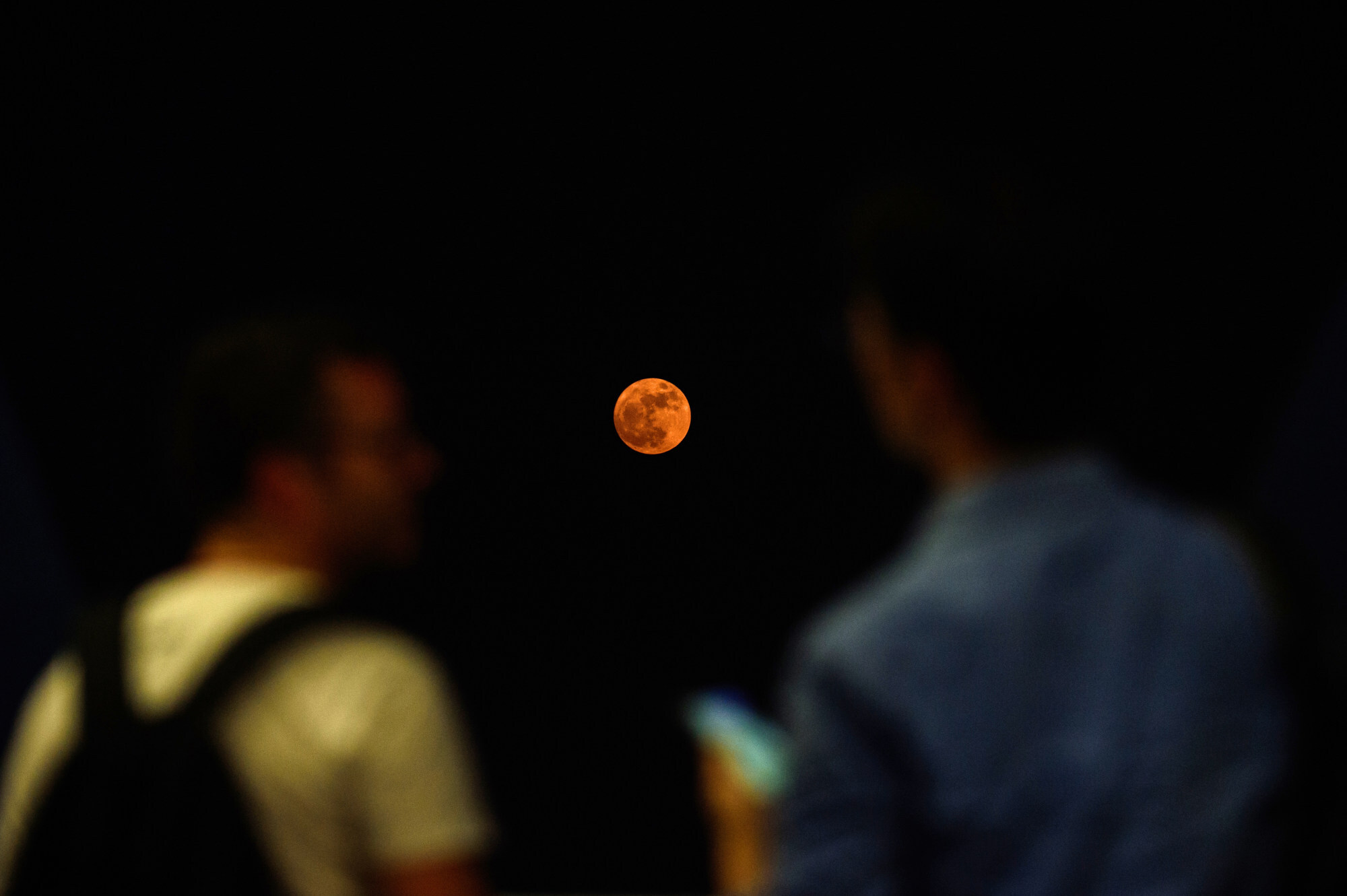
Why is it called a blue moon?
The phrase “once in a blue moon” refers to an occurrence that is very rare, and a “blue moon” is indeed rare, part of a sequence of four full moons visible in the same three-month astronomical season.
Where to find dark skies for stargazing in the Asia-Pacific region
Since this involves a full moon every 29.5 days, this can only happen when there’s a full moon just after a solstice or an equinox, as with the strawberry full moon on June 24. September’s harvest full moon will occur on September 20, just a day before the autumnal equinox.
Astronomers call the third of four moons in one season a blue moon, although the reason for that choice of colour is not clear. They’re reasonably rare, but happen roughly every 2.7 years. The last one was on May 18, 2019, and the next is on August 19, 2024.
Names aside, full moons are always best seen at the moment of moonrise. That’s when they are at their biggest thanks to the mysterious “moon illusion”.
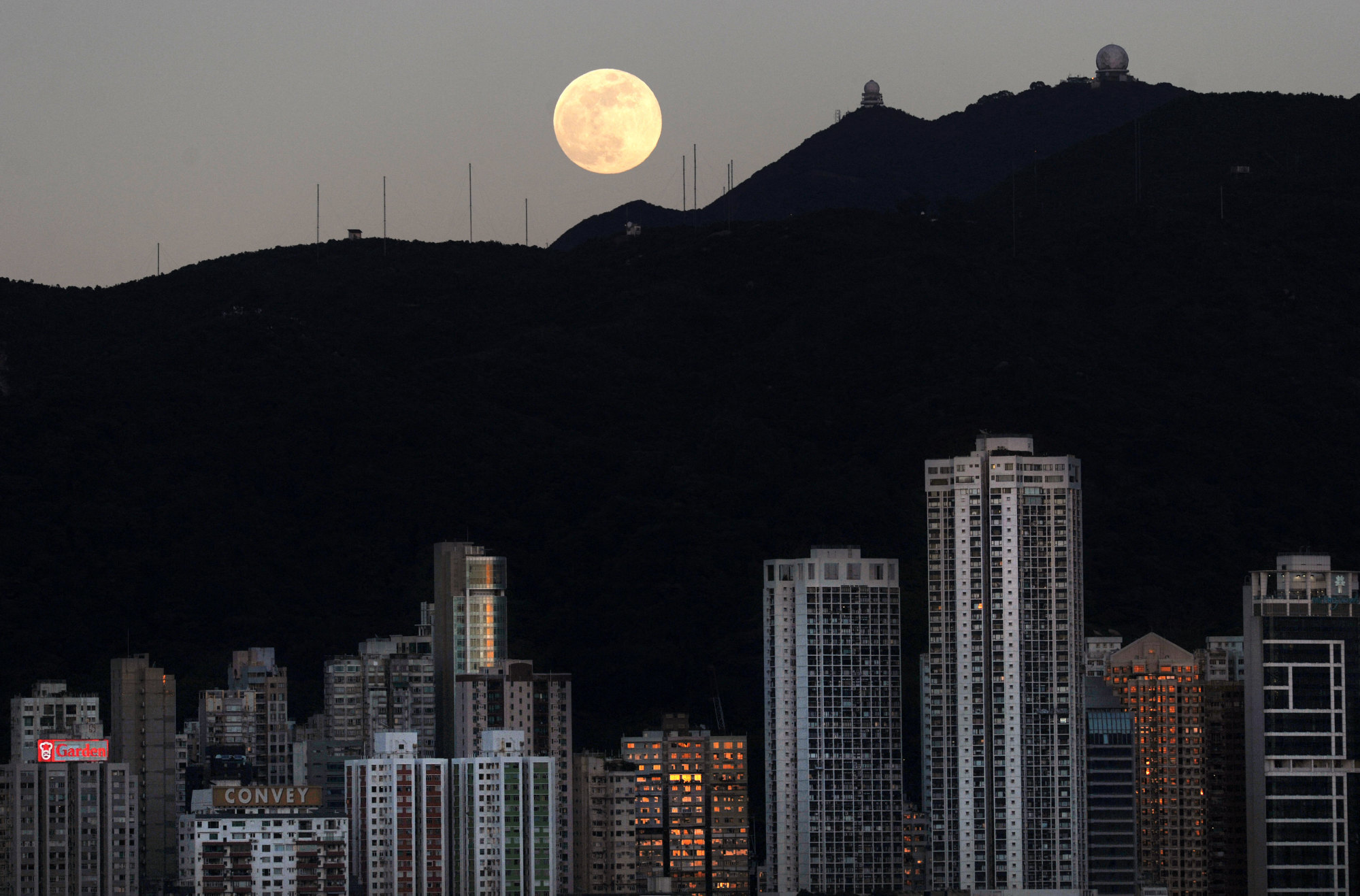
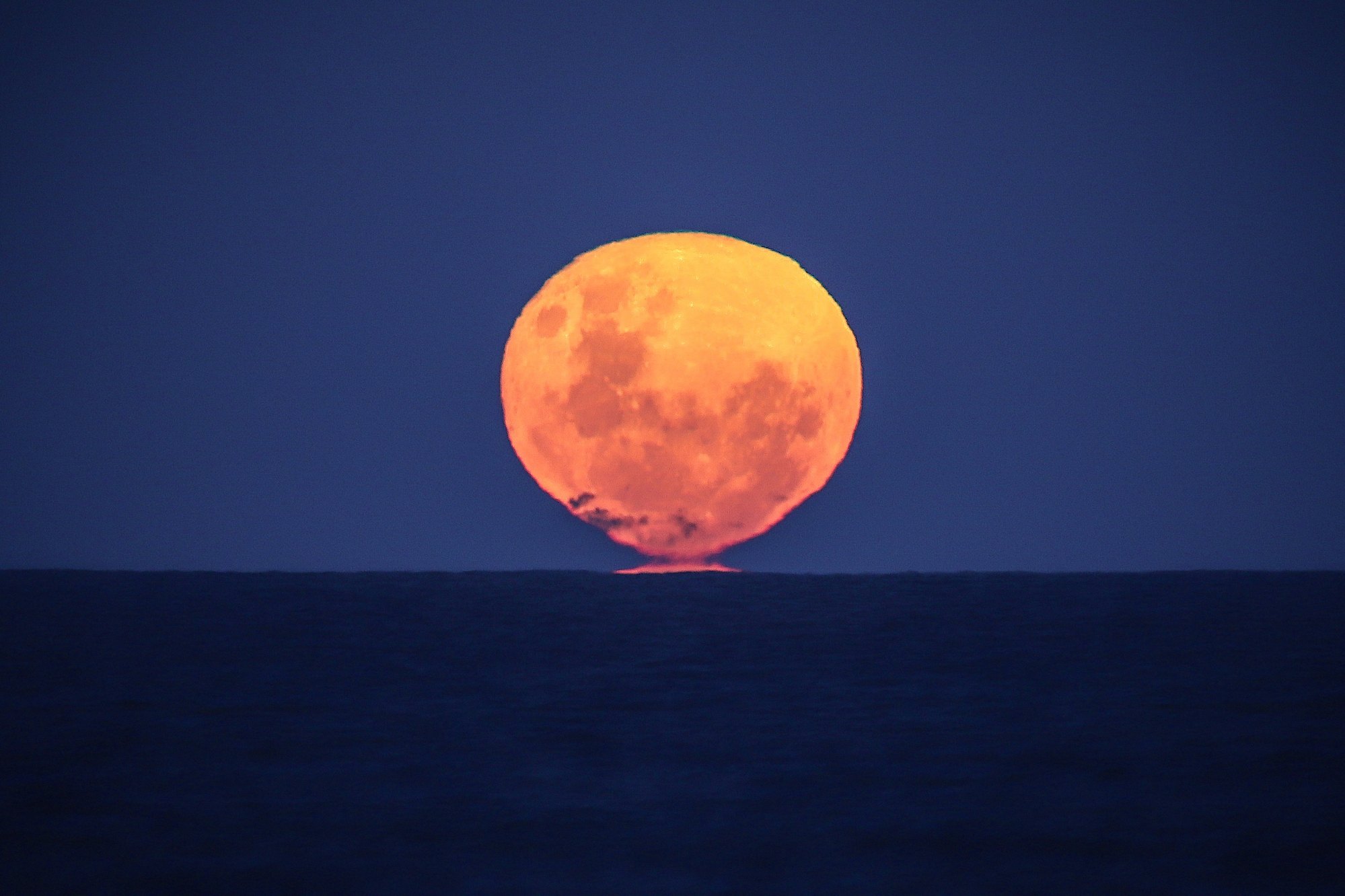
What is the “moon illusion”?
It’s an optical illusion that makes the rising full moon appear extremely large to the viewer even though it’s barely any different to normal. See a full moon appear beside a skyscraper or above a ridge and the human brain makes a comparison in a way it can’t do when the moon is high up against a black sky.
You can watch the full moon appear to shrink slightly as it rises above the horizon.
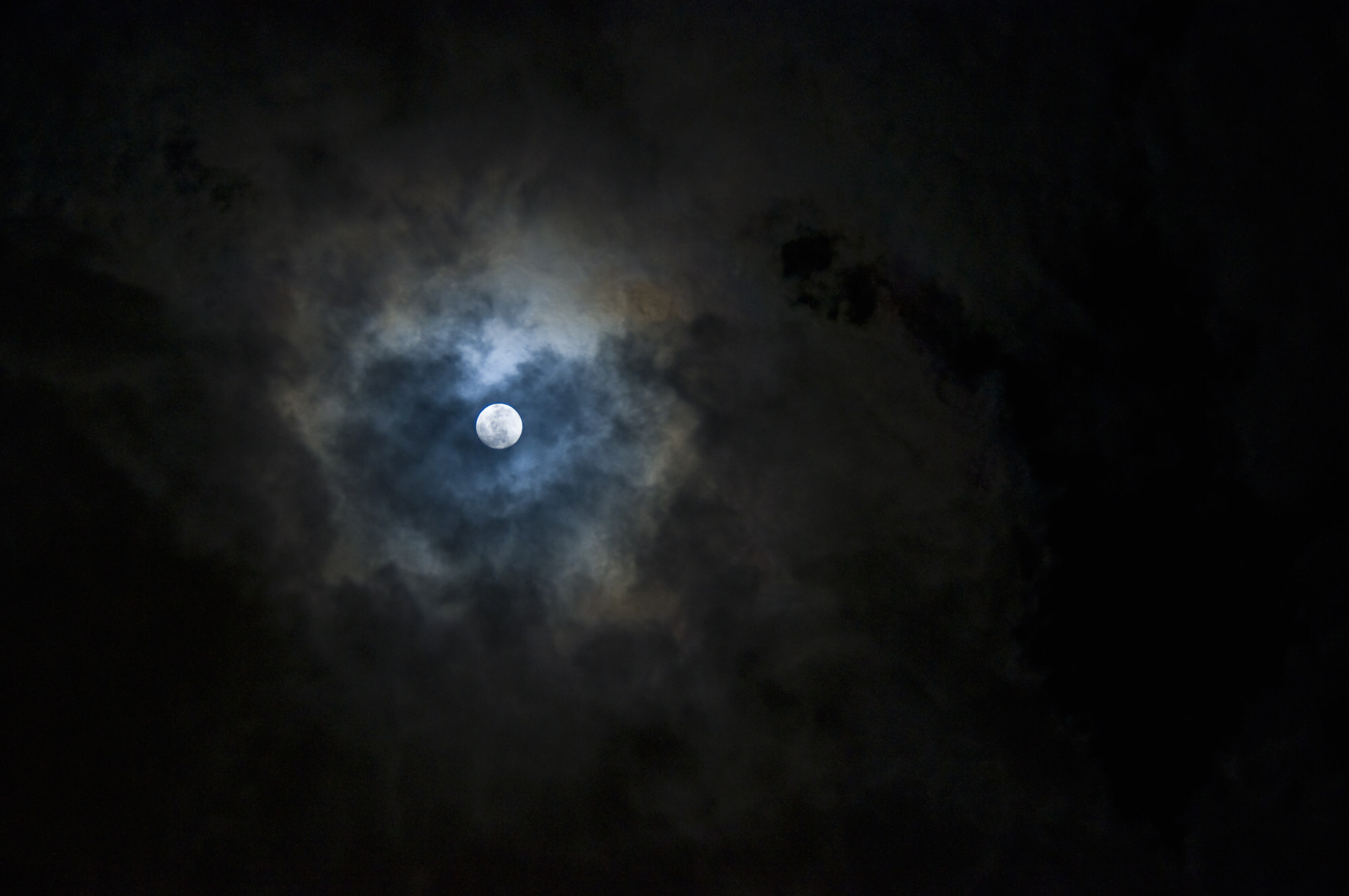
What time is the rise of the blue moon and Jupiter?
Full moons can be appreciated when they’re high in the sky but are best seen close to moonrise and moonset – not only for the “moon illusion” but also because they’re draped in dulled orange hues that are a magical sight in clear skies.
From Asia-Pacific, the best time to see the blue moon will be just after sunset on Sunday, August 22, with the exception of Australia, where the best time to view will be the following evening.
Look to the southeast about 10 minutes after these times and you’ll see – if the skies are clear – the rise of an orange full moon, but just above it you’ll see the bright Jupiter. Look to the upper right of the pair and you’ll also notice the “ringed planet” Saturn, though it will appear to be far dimmer than Jupiter.
When to see the blue moon and Jupiter on Sunday
Jakarta: 17.54
Tokyo: 18.38
Shanghai: 18.44
Bangkok: 18.45
Hong Kong: 19.01
Singapore: 19.16
Beijing: 19.22
Kuala Lumpur: 19.27
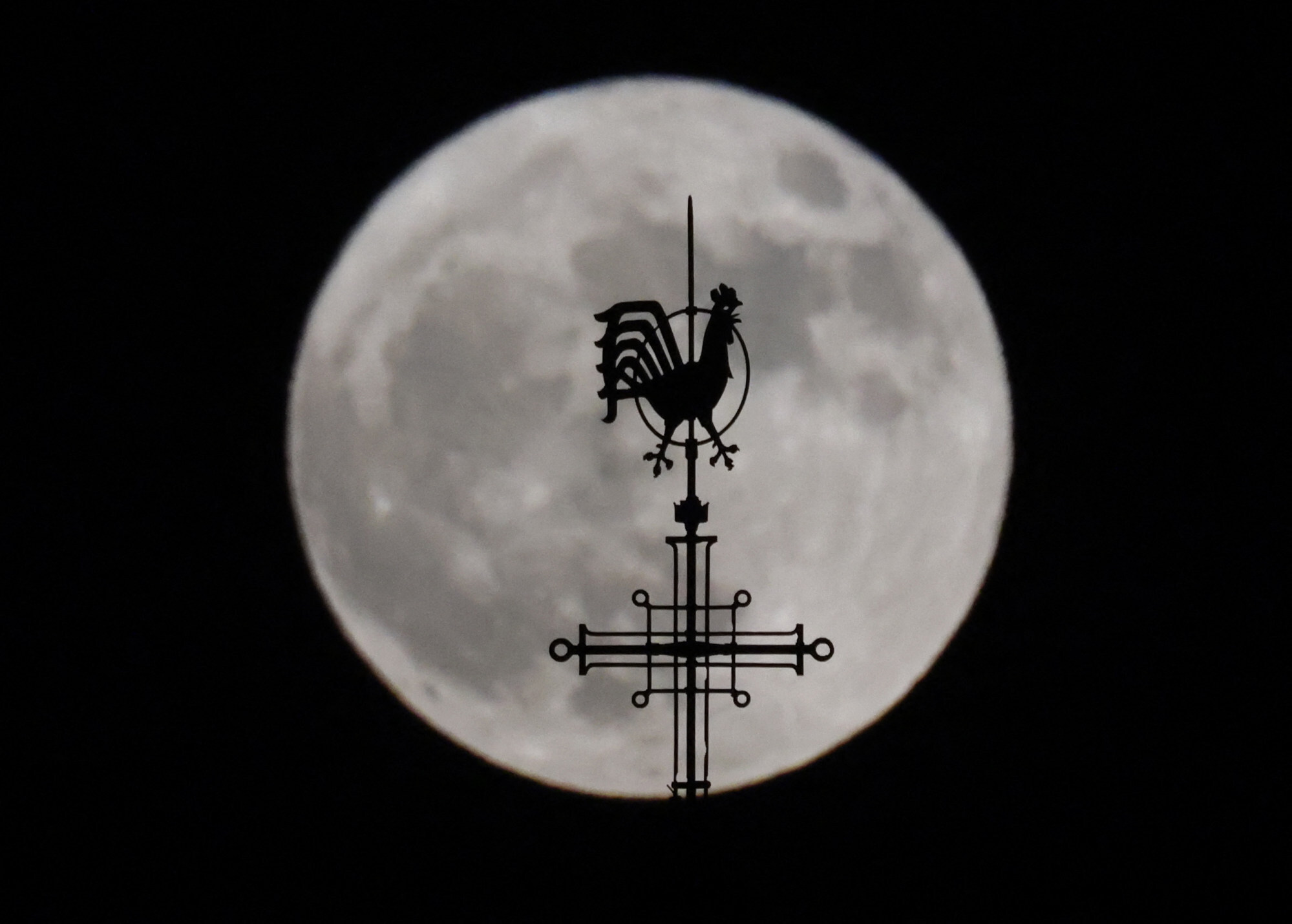
Why is the blue moon orange?
It will be orange because of a process called Rayleigh scattering, whereby the particles in Earth’s atmosphere block and scatter short-wavelength blue light but allow longer wavelength red light to pass through to the observer’s eyes. The physics are the same for sunsets and sunrises.
When is the next full moon?
The next full moon will be the chrysanthemum moon (China) or harvest moon (Europe and North America) that will rise in Hong Kong at 19.35 on Tuesday, September 21.
However, the next really big event for the moon as seen from Asia will be a partial lunar eclipse – a “half-blood moon” – on Friday, November 19. On that date, Hongkongers will be treated to the odd sight of 97 per cent of the full moon being gobbled up by the Earth’s shadow. The event will peak at 17.41, just after moonrise, and continue until 20.03.
Hongkongers queue for chance to see lunar soil collected by Chinese probe
As always, that partial lunar eclipse will precede a solar eclipse – in this case a spectacular and rare total solar eclipse, when the moon blocks the Sun and momentarily reveals our star’s outer corona to onlookers inside a narrow path. That spectacular event will be visible on Saturday, December 4 but in Antarctica only, so is unlikely to be seen by many.

